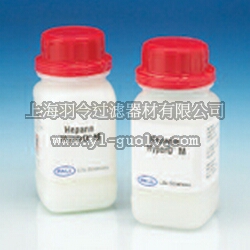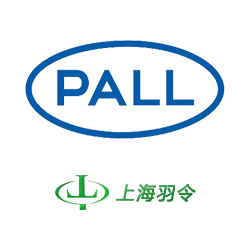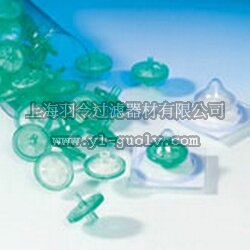pall,
颇尔,Heparin HyperD M 肝素亲和层析介质
For the Purification of Biological
Molecules that Bind to Heparin
-
Design combines the desirable characteristics of a soft, high speed, high capacity hydrogel with the high dimensional stability of a rigid bead
-
Leakage is minimized due to the stable chemical link of the heparin molecule to the sorbent
-
Rapid packing due to the high density of the bead
-
Can be packed in a variety of column sizes

For the purification of:
-
Enzymes (lipoprotein lipase, coagulation enzymes, superoxide dismutase)
-
Growth factors (fibroblast growth factor, Schwan cell growth factor)
-
Extracellular matrix proteins (fibronectin, vitronectin)
-
Nucleic acid binding protein, hormone receptors, and lipoproteins
Average Particle Size
Dynamic Binding Capacity for Human ATIII (10% Breakthrough)1
配基
Immobilized Heparin/mL Sorbent
Working pH
Pressure Resistance
-
70 bar (7,000 kPa, 1,000 psi)
Storage Temperature
1Determined using human ATIII at 72.5 UI/mL in 20 mM TrisHCl, 0.3 M NaCl, pH 7.4. Elution with 20 mM Tris HCl, 2 M NaCl, pH 7.4 at a flow rate of 600 cm/h, 10 cm (4 in.) bed height.
Dynamic Binding Capacity vs.Linear Velocity

Column dimensions:0.46 cm I.D. x 10 cm; Sample:HU ATIII at 72.5 μL/mL; Equilibration buffer:20 mM Tris-HCl containing 0.3 M NaCl, pH 7.4.
Pressure vs.Linear Flow Velocity

Column dimensions:0.46 cm I.D. x 10 cm; Buffer:20 mM Tris-HCl containing 0.3 M NaCl, pH 7.4.
pall,
颇尔,Heparin HyperD M 肝素亲和层析介质













